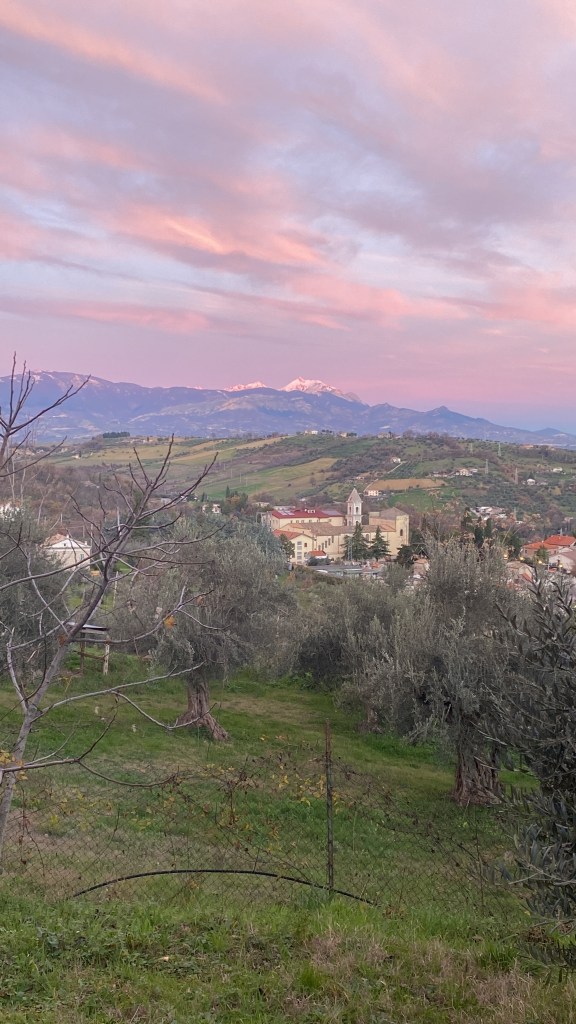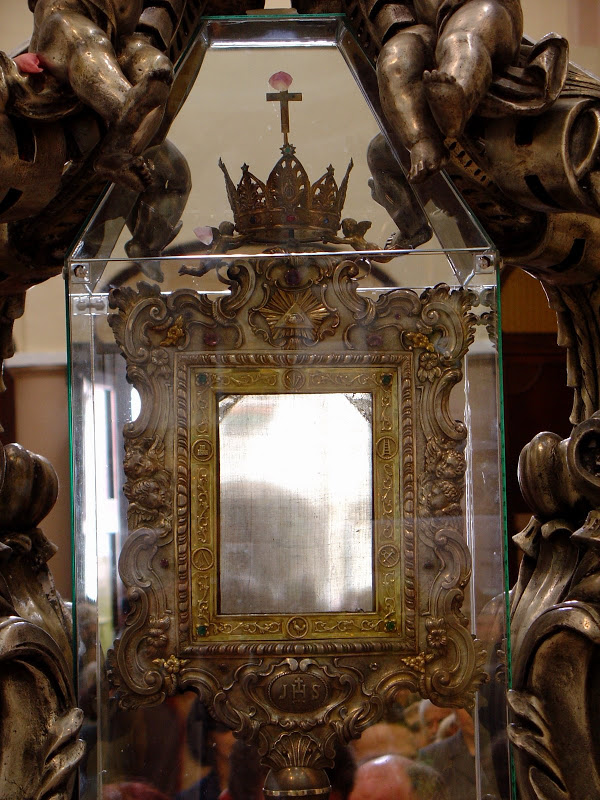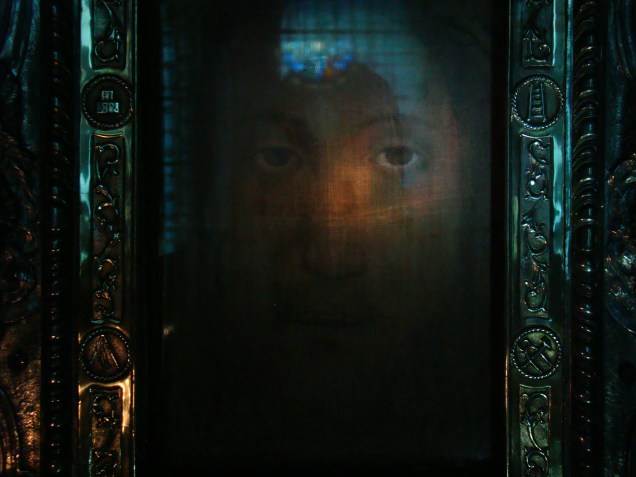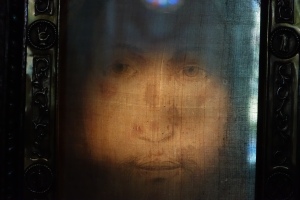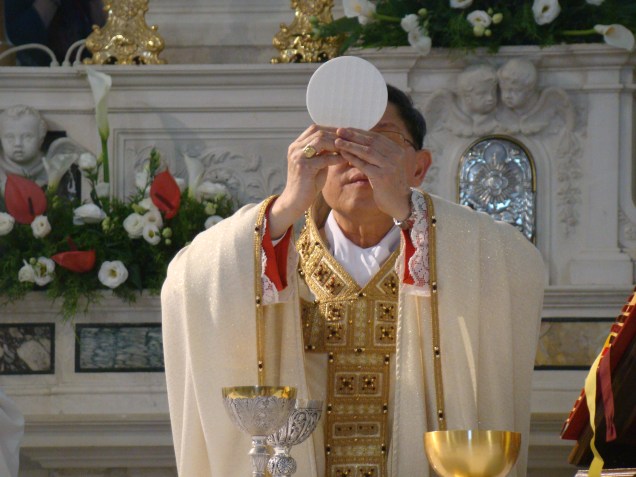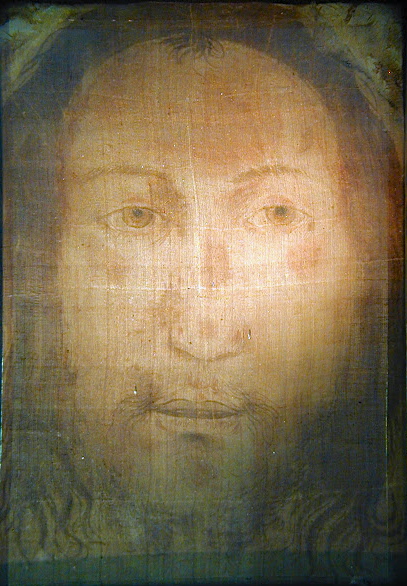Below is a translation (from German and Italian) of a remembrance of Pope Benedict XVI, written by his friend, Paul Badde, which was read on the recent occasion of the Solemn celebration of “Omnis Terra,” January 15, 2023, at the Basilica Sanctuary Shrine of the Holy Face in Manoppelo, Italy:
Benedict’s Legacy
by Paul Badde
On December 31st, an honorary German citizen of Manoppello died with these Italian words on his lips, “Signore ti Amo” (“Lord, I love you”): Pope Benedict XVI
His visit by helicopter [to Manoppello] will be here forever remembered. Countless cameras captured how he [Benedict] could not tear himself away from the sight of the Holy Face, in which the half-blind seer had just discovered “the Face of God,” and which he never tired of praising during his pontificate. Since then, he no longer waited for the end after his death, but for “an encounter;” a term which became, more or less, the center of his theology.

Benedict was the first pope after more than four hundred years to bend the knee before this “true image” [“Veronica”] of Christ. And even more, by his visit, Pope Benedict catapulted the Holy Image, out its hiddenness in the silence of its isolation of Abruzzo, and into the consciousness of the whole earth (“Omnis Terra”). But into a [technologically] changed world where new possibilities of digital comparisons [of images of the Holy Face] could, as never before, be identified in a definitive and concise way as the “Crown Relic of the Resurrection.” This return of the Holy Face to Christianity will forever be the legacy of Pope Benedict XVI.
He [Benedict] immediately told Archbishop Bruno Forte, in German, that he was “begeistert” (enthusiastic). However, after this encounter with the Creator, the Pope requested that the pilot fly him, not by the shortest route back to Castel Gandolfo, but to make a detour over the Gran Sasso glaciers, to encounter the beauty of creation above the highest peak of the Apennines for a small echo of his happiness in Manoppello.

Since that day, the name of Benedict XVI has been forever associated with the “Most Holy Sudarium” of which the eyewitness John first reported in his Gospel. In this respect, Benedict’s memory is like that of Pope John VII, who in 705, when he arrived in Rome from Constantinople, during the period of Iconoclasm in the East, built the first ciborium for this Holy Sudarium [Relic of the burial cloth of the Face of Christ] in the ancient St. Peter’s Basilica, or like that of Pope Innocent III who made public, in the Latin Church, the same sacred veil [of the Holy Face] for the first time on January 16, 1208, when personally and barefoot, he carried the Holy Face in procession to Rome, from St. Peter’s to the sick of Holy Spirit Hospital in Sassia. It was the first celebration of “Omnis Terra.”

Seven years ago, on January 16, 2016, Padre Carmine Cucinelli [then the Rector of the Shrine] brought this festive event to our memory, and to the tradition of Manoppello, repeating the theme of procession, with the citizens of Manoppello along the same route in which we [the faithful celebrating “Omnis Terra] meet today. But this time — also for the first time — in grateful memory of Pope Benedict XVI, the “little prince” of the Catholic Church of our time.
The last photo that exists of him shows him on December 10, 2022 with my friend, Michael Hesemann in his [Pope Benedict’s] study. [One can see] in the monastery “Mater Ecclesiae,” richly decorated with paintings, Benedict’s telephone table: To the right of an icon of St. Benedict of Nursia, he [Pope Benedict XVI] could gaze, until his last breath, at a transparent copy of the “true image” of the Holy Face — that he alone brought back to the world.
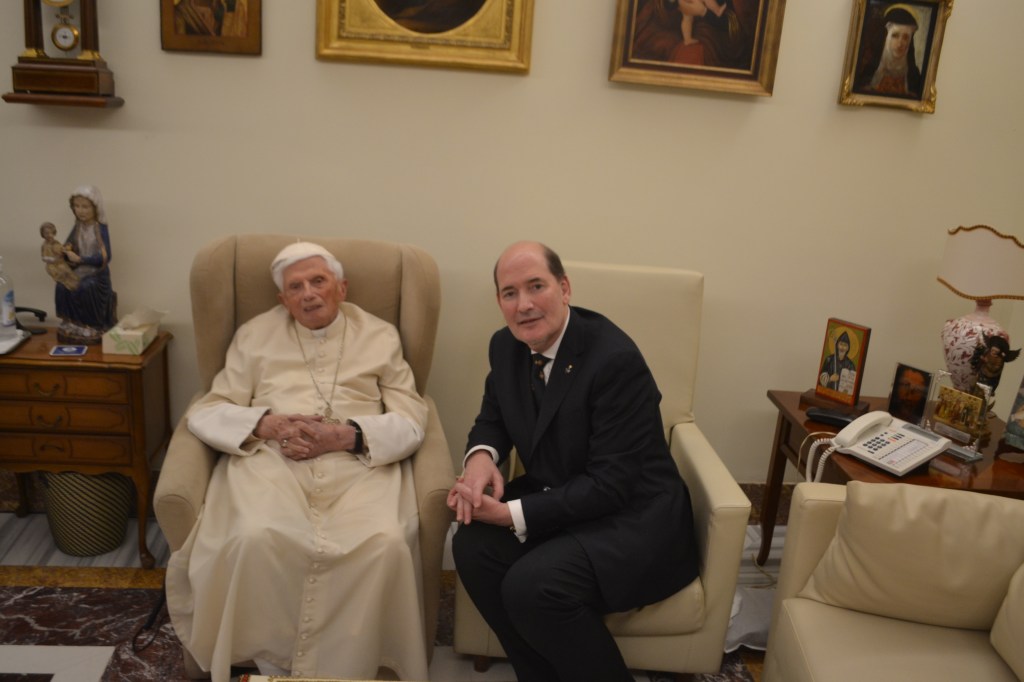
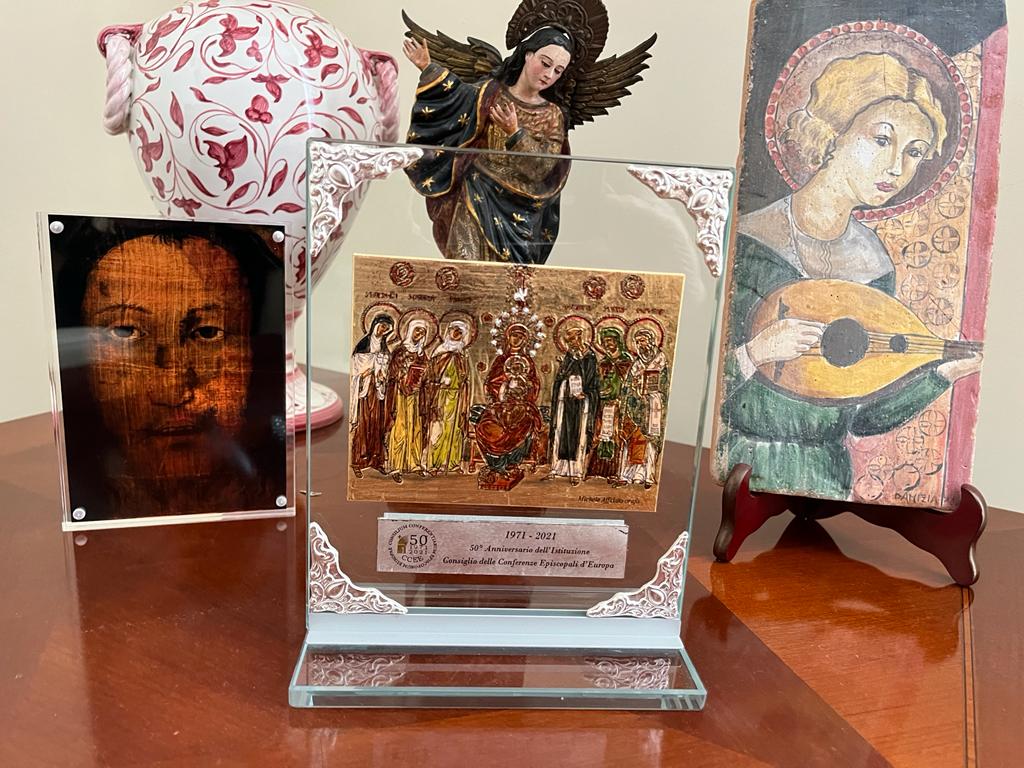

My heartfelt thanks to Paul Badde for so generously sharing his photos and remembrance of Pope Benedict XVI!

The Holy Face, Light that Illuminates the World
Homily at the Mass at the Shrine of the Holy Face of Manoppello
Sunday, January 15, 2023
of
+ Bruno Forte
Archbishop of Chieti-Vasto
It was Pope Innocent III in the year 1208 who desired that the veil of the Holy Face should be carried in procession from St. Peter’s Basilica to the nearby church of Santo Spirito in Sassia. It was the second Sunday after Epiphany, called Omnis Terra Sunday from the words of the Entrance Psalm Omnis terra adoret te, Deus, et psallat tibi! – Let the whole earth adore You, O God, and sing You hymns (Ps 65:4). At the end of that procession the Bishop of Rome wished to bless with the precious relic the sick of the Pilgrims’ Hospital, which he himself had rebuilt and upgraded. With that gesture the Pope intended to highlight the healing grace flowing from the Face of the Savior contemplated with faith and the fruitfulness of the prayer of adoration and intercession before that Face, which we contemplate in the veil of byssus venerated here in Manoppello.
Another Pope, Benedict XVI, who went to meet the Lord last December 31, wished to visit this place on September 1, 2006 to venerate the Holy Face, receiving such a profound impression that he wrote the beautiful prayer we know and also wanted permanently beside him the copy of that beloved Face. Reliable sources assure us that it is to that image that the dying Pope directed His last gaze, pronouncing the words, the true synthesis of His entire life given to Christ, to the Church and to the world: “Lord, I love you!”. The word of God proclaimed this Sunday helps us to understand Pope Benedict’s love for the Holy Face and the reasons that make the pilgrimage to this place a particular source of grace and peace: here from the Face of the risen Jesus marked by pain, but serene and radiant, the light of the Redeemer of man shines for us; Here everyone can welcome that light into his heart for his own life; from here we start with the intense desire to witness to everyone the light of that Face, to lead many to the encounter with the Savior, who profoundly changes our lives and makes us pilgrims in love towards the heavenly homeland, where the Holy Father Benedict has now entered and intercedes for us.
The text taken from the book of the prophet Isaiah (49,3,5-6) reports the promise made by the Lord to manifest His glory on His servant, Israel, whom He chose and shaped from his mother’s womb to restore the tribes of Jacob and to bring back the survivors of Israel and whom he made “light to the nations” to bring salvation from on high to the ends of the earth. In a homily given on September 24, 2011, to young people, gathered for a prayer vigil in the Fairgrounds at Freiburg im Breisgau, Pope Benedict affirmed: “Christ, who says of himself: ‘I am the light of the world’ (Jn 8:12), makes our lives shine, so that what is said in his Gospel may be true: ‘You are the light of the world’ (Mt 5:14). It is not our human efforts or the technical progress of our time that bring light to this world. The suffering of the innocent and, finally, the death of every man constitute an impenetrable darkness that can be illuminated for a moment by new experiences, as by lightning in the night. In the end, however, a distressing darkness remains… However, we see a light: a small, tiny flame that is stronger than darkness, seemingly so powerful and unbeatable. Christ, who rose from the dead, shines in this world, and he does so most clearly precisely where according to human judgment everything seems gloomy and hopeless. He has conquered death – He lives – and faith in Him penetrates like a small light all that is dark and threatening. Those who believe in Jesus certainly do not always see only the sun in life…, but there is always a bright light that shows them a way, the way that leads to life in abundance (cf. Jn 10:10). The eyes of those who believe in Christ see even in the darkest night a light and already see the glow of a new day”. Yes: we believed in the light, which is the Risen Lord, and this light gives meaning to our life and to history and fills the restless hearts of us pilgrims to the heavenly city with peace and hope.
It is not we, therefore, who give ourselves light: it is Christ who gives us the light, he who – as the Apostle Paul affirms in today’s second reading, taken from the First Letter to the Corinthians (1:1-3) – has sanctified us in himself, making us saints by vocation together with all those who everywhere call on his name. The light that liberates and saves is grace, a free and undeserved gift, offered to us in abundance by the One who died and rose for us. Pope Benedict also recalls this in the homily cited: “If we believe that he is the Son of God who healed the sick and raised the dead, indeed, that he himself rose from the tomb and truly lives, then we understand that he is the light, the source of all the lights of this world. We experience again and again the failure of our efforts and personal error despite our good intentions. There are still wars, terror, hunger and disease, extreme poverty and merciless repression. And even those who in history have considered themselves “bearers of light”, without however having been enlightened by Christ, the only true light, have not created any earthly paradise, but have established dictatorships and totalitarian systems, in which even the smallest spark of humanism has been stifled. Only Christ can say “I am the light of the world”… Only by starting from Him can we become an ever new light. Of course, instead of putting a light on the lampstand, you can cover it with a bushel. Let us ask ourselves then: how often do we cover God’s light with our inertia, with our obstinacy, so that it cannot shine, through us, in the world?” May the Lord who looks at us from the Face contemplated in this place flood us more and more with His light, freeing us from evil, making us radiant with His light with His grace, for the salvation of every creature.
Finally, in the passage from the Gospel according to John (1:29-34), we are entrusted with the task of bringing to the world the light that has reached us in Jesus. John the Baptist bears witness to this, saying: “Behold the Lamb of God, the one who takes away the sin of the world!” He then traces for all of us a task, the same one that He fulfilled with His whole life: “I have beheld the Spirit descending like a dove from heaven and remaining upon him. I did not know him, but the very one who sent me to baptize in water said to me: “He upon whom you will see the Spirit descend and remain, it is he who baptizes in the Holy Spirit”. And I have seen and testified that this is the Son of God.” This is our mission: to bear witness to Christ, Lord and Savior. It is once again Pope Benedict who reminds us of this on the occasion cited: “Christ is not so much interested in how many times in life we falter and fall, but in how many times we, with his help, get up again. He does not demand extraordinary actions but wants his light to shine in you. He does not call us because we are good and perfect, but because He is good and wants to make us His friends. Yes, we are the light of the world because Jesus is our light. We are Christians not because we accomplish extraordinary things, but because He, Christ, is our life. We are holy, if we allow His grace to work in us.”
Let us ask, then, the Lord, who looks at us from His Holy Face, to fill us with His light and to be witnesses to His light in every situation of our lives, for the benefit of every creature He will give us to meet. We do so with words taken from the beautiful prayer that Pope Benedict sent us a year after his visit here in Manoppello: “O Lord Jesus, like the first apostles, … We too, your disciples of this difficult time, want to follow you and be your friends, attracted by the radiance of your desired and hidden face. Show us, we beg you, your ever new face, a mysterious mirror of God’s infinite mercy. Let us contemplate him in the eyes of our mind and heart: the face of the Son, the radiance of the Father’s glory and the imprint of his substance (Cf. Heb 1:3), the human face of God who entered history to reveal the horizons of eternity. light that illuminates the darkness of doubt and sadness, life that has defeated forever the power of evil and death… Make us pilgrims of God in this world, thirsting for the infinite and ready for the meeting of the last day… Mary, Mother of the Holy Face, help us to have “clean hands and a pure heart”, hands enlightened by the truth of love and hearts enraptured by divine beauty, so that, transformed by the encounter with Christ, we may give ourselves to the poor and suffering, in whose faces shines the mysterious presence of your Son Jesus, who lives and reigns for ever and ever. Amen!”
Thank you to Raymond Frost for the clear translation of Archbishop Bruno Forte’s Homily!
